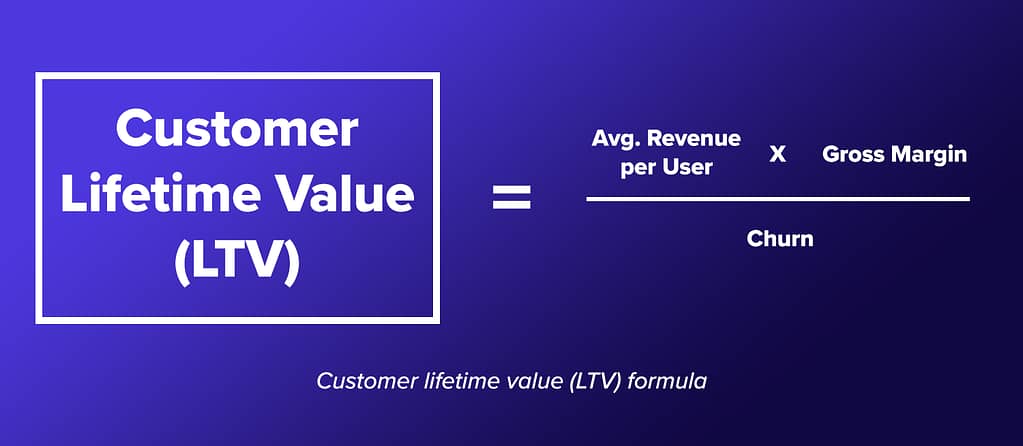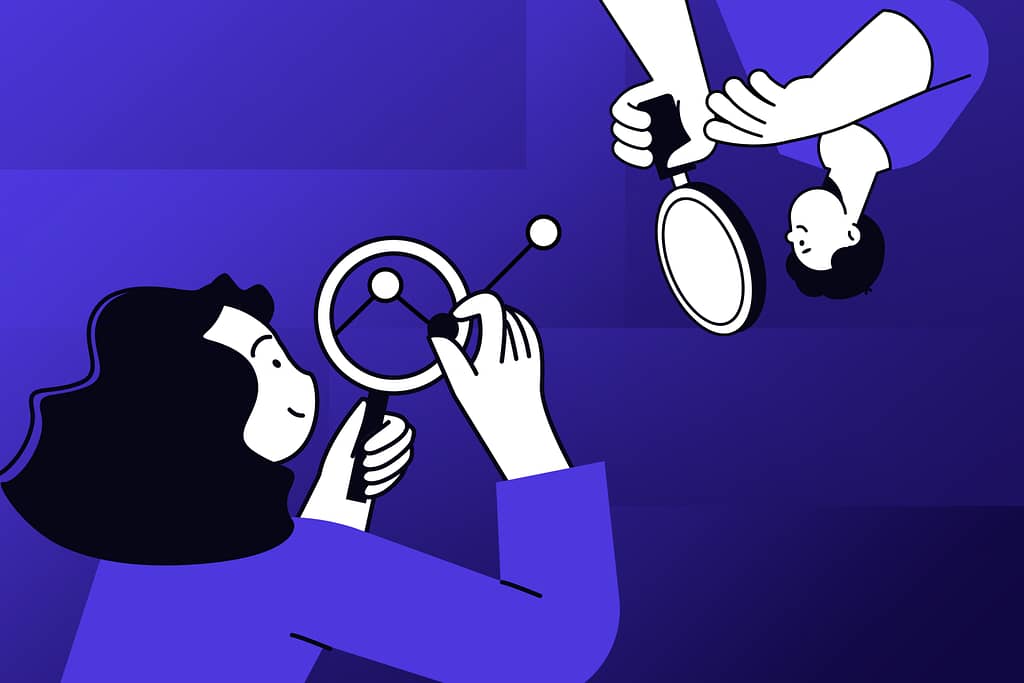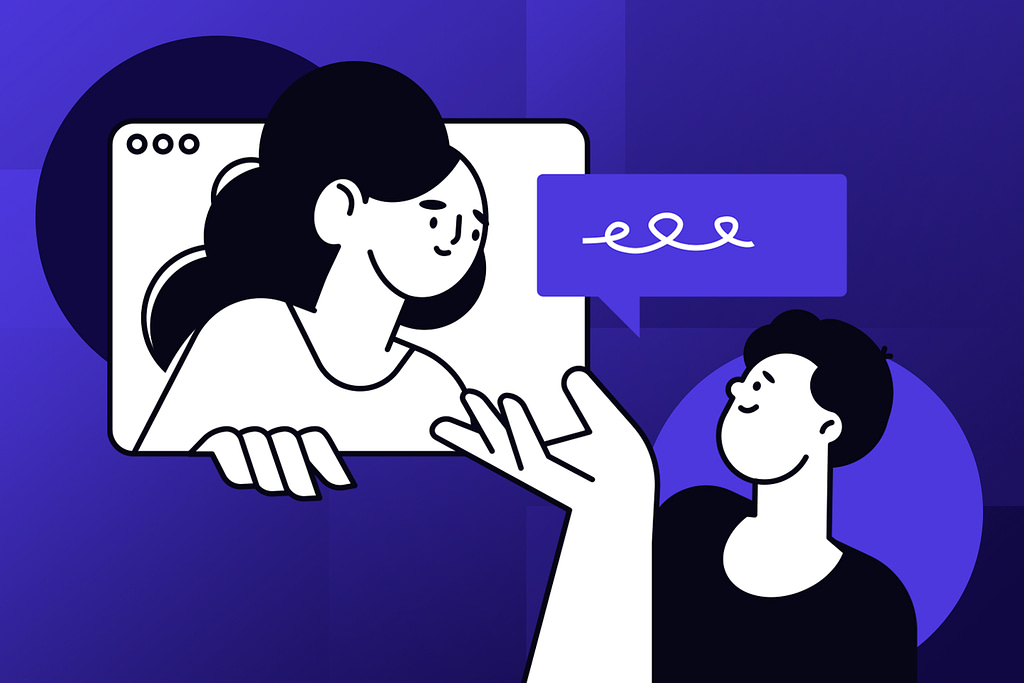Acquiring a new customer costs at least 5 times more than retaining an existing customer. So, focusing on specific metrics that contribute to long-term customer retention is crucial.
One of these important metrics is customer lifetime value (CLV), which provides insights into a customer’s overall relationship with a brand. As a brand owner, leveraging this analytical tool can help you set short-term and long-term marketing goals and reduce your customer acquisition costs (CAC). By doing so, you can improve your return on investment, reduce financial expenses, and develop an impactful marketing strategy.
This blog will explore the concept of CLV, explaining how you can enhance it and the significant value it brings to your marketing endeavors.
What is the Customer Lifetime Value Calculation Formula?
Customer lifetime value (CLV or CLTV) is a vital e-commerce business metric that quantifies the total revenue generated by an average consumer since they first engaged with your products or services. Unlike assessing a single transaction, CLV considers the lasting impact of ongoing interactions with each customer.
To calculate CLV, you must consider several factors, such as buying volume, purchase frequency, and the discrepancy between product costs and selling prices. By combining these essential elements, you acquire a comprehensive perspective of a customer’s value to your brand.
Consequently, this analysis lets you forecast the average revenue you can anticipate in the future from each customer, which then informs the amount of money you should be spending on your marketing efforts and beyond.
What Is the CLV Formula?
The customer lifetime value formula serves as a tool to evaluate the remarkable growth trajectory of your company. By using this CLV calculation, you can gauge the sustainability of your business model and assess the extent to which your services align with customer expectations.
To calculate customer lifetime value, you can multiply the customer’s value by the average customer lifetime of shoppers at your company:
Customer LTV = Customer Value x Average Customer Lifespan
EXAMPLE:

Calculating customer lifetime value provides a predictive indicator of anticipated average order values from your consumers throughout their relationship with your platform.
What is the Role of CLV in Business Strategy?
Knowing your customers’ average CLV plays a pivotal role in shaping a company’s business strategy across various aspects. Recognized as a key performance metric, CLV is a guiding metric that influences decision-making in marketing strategy, customer segmentation, and calculation of return on ad spend.
Marketing and Retention Strategy
CLV plays a pivotal role in developing highly effective marketing and retention strategies for brands. By understanding the lifetime value of individual customers, you can make well-informed, data-driven decisions that optimize long-term profitability, cultivate enduring customer relationships, and build loyal customers.
Leveraging this metric allows you to identify and prioritize high-value customers, enabling you to allocate marketing resources strategically. Tailoring personalized campaigns to attract and retain your best customers can lead to substantial revenue growth over time.
Additionally, the insights derived from CLV data provide in-depth information about consumer buying patterns. With this knowledge, you can launch targeted and timely promotions during peak sales periods. This approach can boost gross margin, enhance customer engagement, and foster loyalty.
CLV also proves to be invaluable for crafting customer retention strategies. By predicting which customers are at higher risk of churning, you can proactively implement measures to retain these valuable customers and reduce churn rates.
This metric also empowers you to tailor retention efforts based on consumer preferences, offering personalized incentives like exclusive benefits, loyalty programs, and special offers to reward loyal and high-spending customers.
Furthermore, CLV helps identify customer pain points, enabling you to allocate resources to enhance customer satisfaction and optimize the overall customer journey. As a result, your business can effectively meet customer needs and strengthen its position in the market.

Customer Segmentation
Customer segmentation categorizes customers based on shared characteristics like age, income, race, and gender. This lets you create targeted marketing campaigns for high-value customers, improving their shopping experience and encouraging repeat purchases.
Analyzing historical purchase data helps identify frequent buyers and high-spending customers, allowing brands to offer personalized promotions and relevant ads. Satisfied customers are more likely to recommend the brand to others, increasing sales and customer count over time.
Using CLV To Calculate Return on Ad Spend (ROAS)
CLV plays a major role in calculating Return on Ad Spend (ROAS). ROAS measures the total revenue generated from each dollar spent on online advertising. By integrating CLV into the ROAS calculation, you can acquire deeper insights into your advertising campaigns’ long-term impact and profitability.
These are some of the common ways CLV can help you measure ROAS:
- It allows brands to understand the true value of the customers acquired through specific advertising campaigns, considering not just their initial purchase but their potential for repeat business.
- It divides customers into multiple groups according to their age, gender, pain points, spending limits, spending habits, and buying frequency to ensure you create only relevant ads.
- CLV allows you to calculate the ROAS of various marketing channels and campaigns, so you can determine which channels yield the highest profits and allocate your marketing budget accordingly.
How Can You Increase CLV?
Increasing the lifetime value of a customer can facilitate long-term customer relationships, drive revenue growth, and improve overall business profitability. You can leverage the below-mentioned techniques to increase your company’s CLV.
1. Enhance Customer Service and Experience
Good customer service is the main factor in creating repeat buying behavior. According to Doddle’s research, 84% of shoppers report that they are more likely to purchase from a brand after having a positive shopping experience. Because of this, you need to enhance your customer support service and offer an exceptional buying experience.
An effective way to improve customer service is to understand customers’ expectations and their driving factors. With this information, you can make necessary changes in your operations and service level and build high customer satisfaction. A highly effective way to acquire this information is through customer feedback.
You can organize surveys or send a feedback form after purchase completion to get an insight into the consumer’s buying experience. After receiving feedback, you can note all the concerns, find their solutions, and implement them to become a customer-centric brand.
2. Personalized Communication
Research shows that 80% of consumers consider personalized messages a key factor in buying from a brand. You can use data collected from the CLV metric to identify customers’ interests and preferences based on their purchase history.
Once you have segmented your customer base into groups, you can create tailored messages that cater to each group’s unique interests and needs. By harnessing personalized communication, you can give individualized attention to buyers, which leads to good customer engagement and encourages repeat purchases.
Additionally, you can have a high CLV by providing a personalized website experience for returning customers. For example, you can display content, products, or promotions that align with the customer’s previous interactions on the website. This way, your clients will not have to spend extra time browsing your site to find their favorite items.
You can also leverage personalization in other communication channels, such as social media, mobile apps, and emails, to form a positive customer experience and deepen brand loyalty. Personalization on these forums will encourage your consumers to interact, which can increase your online engagement levels.
3. Loyalty Programs and Incentives
Loyalty programs and incentives are effective strategies for both attracting new customers and retaining existing ones. Offering gifts or promotional items generates a sense of importance and value among customers, reinforcing their connection with your brand.
To implement these strategies, consider organizing competitions or activities on social media with giveaways. Winners can receive gift hampers featuring their favorite products, helping to introduce new offerings and potentially garnering positive mentions on social media.
Another approach is to create a loyalty program based on spending amounts. Customers can earn points with each purchase, which can later be used as real money. This encourages higher spending and increased shopping frequency, enticing customers to accumulate points and ultimately obtain items for free.
4. Enhance Email and SMS Marketing
Personalized email and SMS marketing campaigns are effective in increasing CLV. You can use the buyer’s purchase history, as well as their browsing history, to send relevant emails and SMSs. If a customer is an email subscriber, you can use their name in the subject line to show the message is specifically curated for them.
Another way to enhance your email and SMS marketing is by sending cart abandonment and product recommendation emails. If a buyer leaves your site without completing a purchase, you can send an email as a reminder to lead them back to your site. You can also recommend products according to their preferences as an upsell technique.
Additionally, you can send cross-selling emails to suggest complimentary products. This approach can help you increase your bottom line.
How Can You Leverage Performance Marketing To Boost CLV?
Leveraging performance marketing allows you to target and reach specific customer segments more effectively, optimizing ad spend and driving higher conversion rates.
By tracking key metrics and focusing on customer acquisition, retention, and upselling, performance marketing helps boost CLV by fostering long-term relationships and maximizing customer value over time.
What Is Performance Marketing?
Performance marketing is a result-driven approach that only requires you to pay if a specific goal is achieved. These goals may be the number of clicks, leads, behaviors, and sales on an advertisement. You can formulate performance marketing ads according to your buyer’s preferences to ensure you get more clicks and leads.
How Does Performance Marketing Maximize CLV?
With performance marketing, brands can leverage data-driven strategies to target relevant audiences, optimize ad performance, and improve customer experiences. As this approach focuses on customer acquisition, retention, and upselling, it drives efficient conversions and nurtures long-term relationships, ultimately increasing customer loyalty and lifetime value for the business.
A/B Testing in Performance Marketing
To maximize the results of performance marketing, you can use A/B testing. In this testing technique, you can create and launch two different versions of a marketing ad campaign. After a specific period, you analyze their results to check which one is presenting the higher results to run as the main campaign.
How Can UGC Enhance CLV?

User-generated content (UGC) can enhance CLV in several ways. The approach creates a sense of authenticity and trust, increasing customer loyalty and retention. Positive reviews and testimonials from other customers encourage new purchases and upsells.
It also fosters community engagement, leading to a stronger emotional connection between customers and the brand. This connection increases customer advocacy, referral rates, and repeat business.
UGC further drives organic traffic and social media visibility, expanding the customer base and generating more opportunities for long-term relationships. Overall, UGC’s impact on trust, engagement, and visibility significantly contributes to enhancing CLV.
How MuteSix Can Help
MuteSix accelerates growth for disruptor brands through real-time marketing that solves for customer, market and brand needs.
Leveraging data-backed, omnichannel media buying, growth marketing, and creative strategies, our team of forward-thinking experts scale brands to success faster and more efficiently than any agency can.
Ready to grow your brand? Reach out today for a marketing consultation to see if you qualify for a free omnichannel audit.
Sources:
The Value of Keeping the Right Customers | Harvard Business Review